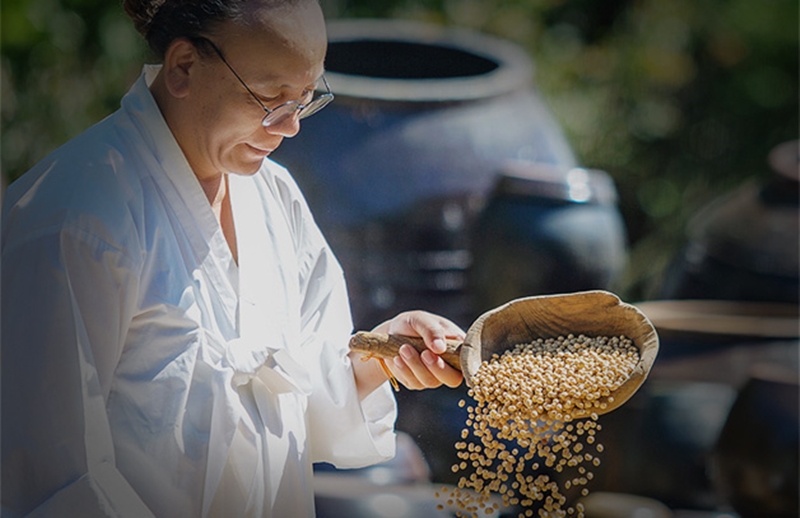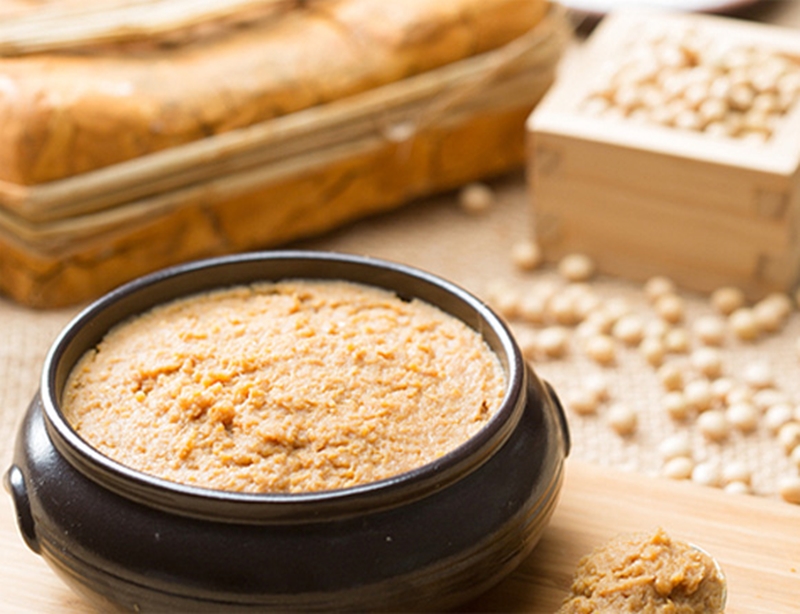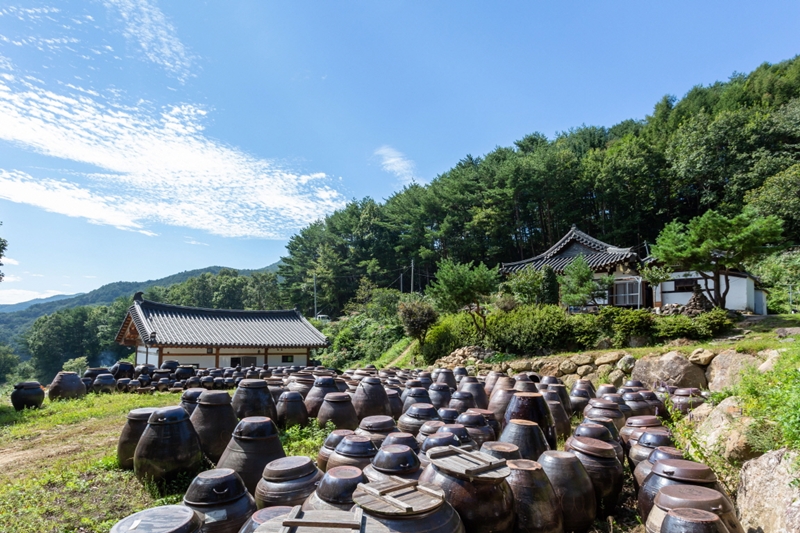
Jeong Seung Hwan, a master of jang, or traditional sauces and pastes made from fermented soybeans, selects the soybeans to ensure quality, blowing away dust and bean hulls before making maeju (fermented soybean lumps).
By Koh Hyunjeong
Photos = Jeong Seung-hwan
Gochujang (spicy red pepper paste) goes into bibimbap, or rice with vegetables and meat, soy sauce is used to make bulgogi (marinated stir-fried meat) and ssamjang, a thick and spicy sauce made with soybean paste, is a key ingredient of samgyeopsal (grilled pork belly).
What makes Hansik (traditional food) tastier and healthier is jang, or sauces and pastes made from fermented soybeans.
The popularity of Hallyu (Korean Wave) is raising global interest in Korean cuisine. UNESCO on Dec. 4 recognized the nation's culture of making jang as an Intangible Cultural Heritage of Humanity, Korea's second piece of culinary culture to make the list after kimjang, or the traditional culture of making and sharing kimchi.
In explaining its decision, UNESCO's Intergovernmental Committee for the Safeguarding of the Intangible Cultural Heritage called jang the basis of the domestic diet, with each household's version possessing a unique flavor and containing the family's history and tradition.
Korea.net on Dec. 6 interviewed Jeong Seung Hwan, who is designated by the Ministry of Agriculture, Food and Rural Affairs as a master maker of jang, to learn more about jugyeom hong doenjang, or red soybean paste with bamboo salt. Since age 16, he has made the sauce in the village of Cheonghakgdong, located 800 m above sea level on Jirisan Mountain.
The following are excerpts from the interview.

Jugyeom hong doenjang (red soybean paste with bamboo salt)
Describe the taste of hong doenjang (red soybean paste).
It has a rich flavor. This is because we add deotjang (additive paste) every year to doenjang (soybean paste) made with bamboo salt and ferment it for seven years in breathable earthenware jars. The clay jars maintain a constant temperature and moisture that facilitate the fermentation of microorganisms.
What is deotjang and how is it made?
Yeast doesn't smoothly ferment after five years of making jang. Thus one must make porridge every year with the right combination of rice, barley and glutinous rice flour and bamboo salt to mix it into existing jang. This makes hundreds of millions of microorganisms go active again and maintains the taste and aroma of the jang.
How do you make hong doenjang?
It starts with making maeju (soybean lumps) with soybeans in fall and then fermenting and drying them. The following year, make jang with bamboo salt, maeju and crystal-clear water from a stream on Jirisan Mountain and take out the maeju two months later. Grind the maeju and turn it into doenjang, and make soy sauce from the remaining liquid.
What is the secret to boiling the beans?
Don't keep the beans in water after washing them because the water in them will drain out and the beans will turn bland. Boil the beans in a cast-iron pot or pressure cooker with enough water for at least two hours, but the taste will be better after boiling for at least three hours.
What makes the bamboo salt used in hong doenjang special?
This bamboo salt was made by filling bamboo with sea salt dried for 10 years and baked in a yellow clay kiln nine times over 45 days. Bake it at 920-930 degrees Celsius eight times and 1,300 degrees for the ninth and final time. The bamboo salt made this way tastes both salty and sweet.
What is a good day for making jang?
I would say Jan. 1 under the lunar calendar. This day has long been considered a time when bad energy (germs) cannot come close because of the cold. But if that day is cloudy or windy, a sunny day should be selected because fermentation is heavily affected by weather factors like temperature and moisture.

What completes hong doenjang (red soybean paste) is time. Shown is earthenware clay jars storing such paste under the clear air and sunshine of Jirisan Mountain.
Why is hong doenjang red?
Doenjang gradually turns dark red as time passes. The longer it is fermented, the higher its absorption rate in the human body. The rate for cheongjang (less fermented paste) is about 78%, but that for hong doenjang fermented six to seven years is about 95%. This is thanks to high organic content derived from fermentation under the clear wind and sunshine of Jirisan Mountain. Hong doenjang is easy to digest, so both the elderly and children can eat it easily.
When will a sauce specifically developed to globalize doenjang come?
We will release it next year. Its design allows it to be easily sprinkled on salads or used as dip for gimbap (seaweed rice rolls). We also plan to export and customize it to the preferences of each country.
hjkoh@korea.kr
Most popular
- Grammy-winning producer calls Suga of BTS 'amazing artist'
- 'Universal love, family' themes fuel success of 'King of Kings': director
- Council sets minimum hourly wage in 2026 at KRW 10,320
- Export deal for K2 tank concluded with Poland for KRW 9T
- Songs from animated K-pop film rule Spotify daily chart in US
